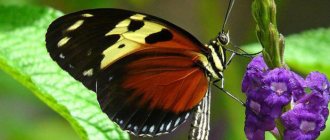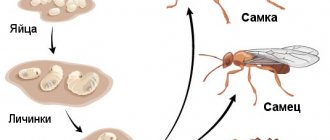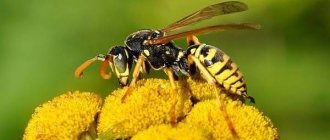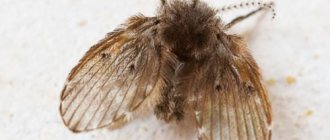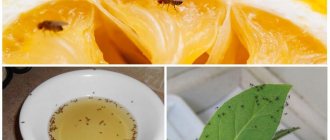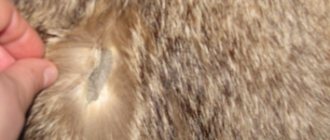They come in different shapes and sizes. While most are harmless, venomous caterpillars make it clear that they don't like to be touched.
Insects have a common defensive strategy to discourage predators. These are bristles, which are prickly spines or hairs. Each hollow bristle is poisoned from a special glandular cell. They come into contact with your finger, then come off the insect's body, releasing toxins onto the skin.
What happens if you touch a poisonous caterpillar? It will hurt! The reaction depends on the type of insect, the severity of the contact, and the person's own immune system.
You will feel a burning sensation, itching. You may end up with a rash or even nasty pimples or lesions. In some cases, the area will become swollen or numb, or there will be nausea or vomiting.
Here are some safe pictures of poisonous caterpillars so you know what they look like.
Saddle Caterpillar
The bright green saddle encourages you to take a closer look without being tempted to touch it. The spines protrude in almost all directions. She will arch her back to get as many thorns as possible. The young feed in groups. As soon as there are a lot of them, they begin to spread out. Family Limacodidae.
Where they live: Fields, forests, gardens from Texas to Massachusetts;
What they eat: Almost everything - herbs, shrubs, trees, garden plants.
Caterpillar dermatitis
Caterpillar dermatitis
Etiology and epidemiology
The disease occurs at any age, regardless of gender and ethnic groups, but is more common in children who play with caterpillars, and in adult men of certain professions (foresters, gardeners, farmers, hunters).
The disease is caused by direct skin contact with certain types of hairy caterpillars (caterpillar dermatitis), inhalation of windblown hairs (lepidopterism) or hairs getting into the eye (ophthalmic papule). Caterpillar hairs are hollow structures containing glandular epithelial cells that produce a toxin.
The composition of the toxin is not fully understood and, according to some studies, contains peptides, hyaluronidase, phospholipase A and biogenic amines such as histamine or histamine-releasing substances.
Upon contact with human skin, caterpillar hairs penetrate it causing mechanical irritation and, breaking off, release a toxin that causes intercellular swelling of the spinous layer of the epidermis and diffuse dilation of the vessels of the upper dermis. In some patients, after contact, IgE is produced, which leads to hypersensitivity and the occurrence of generalized urticaria when subsequent re-contact.
The following types of butterfly caterpillars that cause dermatitis (lepidopterism, ophthalmic papule) are common in the Russian Federation:
- Golden silkworm (Euproctis chrysorrhoea)
- Gypsy moth (Lymantria dispar)
- Oak silkworm (Thaumetopoea processionea)
- Pine silkworm (Thaumetopoeidae pinivora)
| Euproctis chrysorrhoea | Lymantria dispar |
| Thaumetopoea processionea | Thaumetopoeidae pinivora |
More often, sporadic cases are observed, with mass reproduction of caterpillars - outbreaks of dermatitis (with strong winds - epidemics of lepidopterism)
Clinical picture
- Dermatitis
occurs either directly or 8-12 hours after contact with the caterpillar in the form of an intensely itchy, painful, erythematous, papular or urticarial rash, usually located in a linear pattern. In more rare, severe cases, vesicles, blisters, petechiae, ecchymoses and skin necrosis are noted. The rash may persist for several days and then spontaneously regress. Systemic symptoms, not observed in all cases, may occur within minutes of exposure (usually within 2 hours) and include headache, dizziness, restlessness, nausea and vomiting, malaise, enlarged and painful lymph nodes, muscle spasms, tachycardia and, in exceptional cases, changes in mental status. As a rule, they disappear within 24 hours. With severe itching due to constant scratching, secondary infection in the form of pustules, crusts and, sometimes, boils and abscesses can be observed. - Lepidopterism
is characterized by acute rhinitis, lacrimation, cough, shortness of breath and chest pain. In more severe cases, headache, nausea, vomiting, bronchospasm, diffuse erythema and urticaria. - An ophthalmic papule
occurs when hairs enter the cornea, anterior chamber or lens of the eye and is characterized by acute conjunctivitis. In severe cases, keratitis, acute uveitis, retinochoroiditis, endophthalmitis occur leading to temporary and sometimes permanent blindness.
Diagnostics
The diagnosis in most cases is clinical and is based on anamnesis and characteristic symptoms. By microscopy of skin scrapings or by examining the eye with a slit lamp, caterpillar hairs can be detected. Histological examination reveals spongiosis, diffuse dilation of the vessels of the upper dermis, and caterpillar hairs surrounded by a lymphocytic infiltrate.
Differential diagnosis
- Centipede dermatitis
- Pederus dermatitis
- Arthropod bites
- Contact and allergic dermatitis
- Phytophotodermatitis
Treatment
First aid
- The caterpillar must be immediately removed from the skin using a foreign object (not your hands)
- Affected skin should be immediately washed with soap and water and dried without contact with the skin (eg hair dryer or fan).
- After contact with eyes, they should be rinsed immediately with plenty of water or saline solution.
- Apply adhesive tape to the lesions to remove hairs. Alternative effective removal methods include using rubber cement, clear nail polish, or facial peels (each applied, dried, then peeled off)
- Local cooling reduces pain (ice, isopropyl alcohol, or ammonia)
Dermatitis
- Antihistamines (H1 and/or H2 blockers).
- Local and systemic corticosteroids.
- Prostaglandin synthetase inhibitors (aspirin or indomethacin) reduce discomfort, but their use should be avoided if there are any signs of coagulopathy.
- Local antipruritic agents containing menthol.
- For secondary infection, antibiotics are administered locally or systemically.
Lepidopterism
- Antihistamines (H1 and/or H2 blockers) and beta-agonists in the form of aerosols, inhalers
- Inhaled oxygen and systemic steroids in severe cases
Ophthalmic papule
- Urgent consultation with an ophthalmologist for surgical hair extraction
Prevention
- All caterpillars should be considered potentially toxic and contact with them should be avoided, especially children.
- When working outdoors during peak caterpillar breeding season, wear long-sleeved shirts, long pants with cuffs tucked into socks, and work gloves. Collars of clothing should be tight fitting.
- Wide-brimmed hats can prevent caterpillars from falling from trees onto your head and face.
- When working in a caterpillar breeding area or in strong winds, wear a tight-fitting face mask and safety glasses. Laundered clothing should not be hung outdoors to avoid exposure to airborne hairs.
- Insecticides can be used to control caterpillar populations.
Source: https://agapovmd.ru/dis/skin/caterpillar-dermatitis.htm
Crowned caterpillar
The crowned slug displays spines like a feathered headdress. Stinging bristles crisscross the slug's perimeter, decorating its flattened green body. Late instars are sometimes marked with colorful red, yellow spots along the back.
Species: Isa textula, family Limacodidae;
What it eats: oak, elm, hickory, maple, several other woody plants.
Giant silkworm
This multifaceted, spiny, poisonous caterpillar is ready for battle. The eggs are laid in clusters, so early instars are visible in clusters. They begin their larval life as dark brown, gradually moving from brown to orange, then to green.
Find out more American flying cockroach - what it looks like, habitats
Group: Automeris io. Giant silkworm, royal moths (family Saturniidae).
Habitat: Fields, forests from southern Canada to Florida, Texas
It feeds on willow, aspen, cherry, elm, poplar, and other trees. They love clover and herbaceous plants.
Monkey slug
The poisonous caterpillar is sometimes called the monkey slug. The name fits once you see what it looks like. It's hard to believe that this is an insect. It can be instantly identified by the furry "arms" that sometimes fall down.
But be careful—this cuddly insect is covered in tiny, poisonous bristles. Eats apple, cherry, persimmon, walnut, chestnut, hickory, oak, willow, birch, and bushes.
Saturnia io (Automeris io)
One of the Peacock Eye species. Caterpillars at the first stage are reddish in color. Later they change color to green, becoming like the “catkins” of some trees. The top photo shows Saturnia io at an older age, the bottom photo shows larvae in the first stage of development.
The caterpillars are protected by spikes containing strong poison, which is released at the enemy at the slightest danger. Contact with this poison leads to erucism: toxic dermatitis. Erucism is characterized by the following features:
- blisters;
- itching;
- strong pain;
- lymphangitis;
- edema;
- skin necrosis.
Sometimes tissue death occurs with erucism.
But all these dangers live in quite exotic countries and not every Russian tourist will encounter them. But there are three species of butterflies whose offspring you can stumble upon when leaving your home in your homeland. The poisonous caterpillars of Russia do not pose a mortal danger, but they can cause a lot of unpleasant impressions.
Saturnia io
Caterpillar cat
This flannel moth larva looks like it makes you want to reach out and pet it. Appearances are deceptive. Hidden under those long blond hairs are poisonous bristles.
Even a light touch will cause a serious skin reaction, so don't touch anything that resembles this insect. Grows up to 3 cm in length. Belongs to the species Megalopyge opercularis.
Eats leaves of woody plants, apple, birch, oak, persimmon, almond, pecan.
What harm does it cause to a person?
Adults, pupae and eggs of Lonomy are completely harmless to humans. Only the butterfly caterpillar poses a mortal danger. Its poisonous furry needles contain one of the most powerful natural toxins known to science.
This type of toxin is a powerful anticoagulant that blocks blood clotting in the human body.
As a result of poisoning with lonomia poison, a person experiences internal and external bleeding, the functioning of the kidneys is sharply disrupted, hemorrhage occurs in the brain and, as a result, apoplexy occurs. In delayed cases, a lonomia bite is fatal.
A light touch on the caterpillar's spines is enough to receive a microscopic dose of its venom, which, being only one thousandth that of a rattlesnake, is fatal. On
Today, the number of deaths from lonomia is almost equal to the number of deaths from rattlesnake bites.
Most often, tourists who accidentally lean against places where caterpillars accumulate or pick them up, not realizing the danger of insects, suffer from the venom of lonomia. Some victims encounter the insidious creature without noticing it on the bark, branches and leaves of trees, thanks to the protective camouflage of lonomia.
For residents of South American countries, the situation is aggravated by the fact that lonomy now lives not only in forests. They began to settle in farmland and orchards. Therefore, there is always a danger for farmers of accidentally coming into contact with a caterpillar.
Symptoms and consequences
Depending on the dose of poison received, symptoms of poisoning may appear within 1 to 12 hours. The person begins to feel a burning sensation, pain, weakness and nausea. Multiple hemorrhages appear at the injection sites. If treatment is not carried out at this time, serious disruptions to the functioning of the entire body are added to the listed symptoms, which can lead to death.
Poisonous pink
The stinging pink caterpillar does just that - it stings. Color varies from yellow to red. Look for unique stripes to identify - four dark stripes along the back, with cream stripes in between. Species Parasa Indetermina.
It feeds on woody plants. Including dogwood, maple, oak, cherry, apple, poplar.
Nason slugs
Nason's slugs do not have large spines, but can still cause minor health damage. If it feels threatened, it quickly pulls out poisonous hairs. If you look at it, you will notice that the body has a trapezoidal shape. Eats hornbeam, oak, chestnut, beech, hickory.
Find out more 10 interesting facts about caterpillars that you never knew about
How to treat caterpillar dermatitis
A skin disease caused by caterpillar hairs is commonly called caterpillar dermatitis.
The symptoms and treatment of the disease have been studied; if detected early, the negative consequences can be quickly removed.
To do this, you need to know general information about the disease.
Different caterpillars secrete different chemical secretions. Some can cause severe skin conditions called "hives." The larvae affect the skin after some time, sometimes reaching 2 days.
Most often, caterpillar dermatitis appears as a result of butterflies living on deciduous and coniferous trees. The mark remains on areas not covered by clothing, causing severe itching. The size of the affected area sometimes does not exceed a millimeter.
general information
When moving along the body, the caterpillar leaves behind a trail that appears after a few minutes. Lepidopterism, the second name for caterpillar dermatitis, appears as a result of poison getting on the skin. The reaction becomes stronger if the poison penetrates the respiratory organs or digestive system.
Due to the interaction of the chemical composition that gets on the skin and the action of human receptors that serve to protect the affected area, the body's response appears in the form of a red stripe. After some time, the mark begins to itch and swell.
If the lesion is scratched, the hairs that have not been removed from the skin move to neighboring cells, affecting them. Hence the spread of redness over large areas when scratching the skin. The swelling that accompanies the redness also appears in new places.
Sweating areas are very vulnerable. Often, with caterpillar dermatitis, a person develops conjunctivitis and minimal disruptions in the respiratory rhythm. The condition of contaminated areas returns to normal over time. Depending on the person's skin, full recovery may take up to a week.
Stages and symptoms of the disease
The disease has periods that differ in the effect of the poison on the skin. Simple contact dermatitis occurs in the following stages:
- Initial. Here, the intensity of the symptoms from the poison that gets on the skin gradually increases, and morphological changes in the skin occur. Below is a photo of stage 1 caterpillar dermatitis
- Spicy. The clinical picture of the disease is maximum. The skin itches and red stripes appear on it, increasing when scratched.
- Remission. The clinical picture decreases. Inflammation of the skin subsides, the skin acquires a normal color, and the burning sensation stops.
After an hour and a half, the clinical picture is most fully visible on the affected area. Occurs:
- redness of the affected areas of the skin due to contact with poisonous glands. The affected areas are called erythema;
- itching in areas of skin redness. Sometimes it is very strong;
- blisters form, filling with fluid and pus;
- crust when piercing blisters, which is evidence of the transition of the disease from the acute stage to the remission stage;
- increase in temperature in places where the inflammatory process occurs.
Treatment
The first step is to remove the caterpillar from the body. This should be done not with bare fingers, but with improvised objects or gloves so that the hairs do not fall on other areas.
If possible, it is necessary to remove hairs caught in the skin.
You can treat the site of dermatitis in the following ways:
- Therapeutic. The patient must follow a diet that excludes the ingestion of hyperallergenic foods, such as chocolate and citrus fruits. In the absence of an obvious allergic reaction, the requirement must still be observed.
- Medication. Divided into internal and external:
- Medicines for internal use: Fexofenadine, Cetirizine, Suprastin. If used, the age of the patient must be taken into account.
- External agents should be used less frequently, their effect is strong, for “severe” cases. You can use corticosteroid ointments, bandages soaked in prednisolone.
- Operational. To remove poisonous hairs from the skin, in some cases you should seek the help of a dermatologist. After the measures taken, the skin quickly recovers, acquiring a healthy color, and the itching disappears.
Traditional methods
For treatment, you can use traditional methods. To do this, chop a raw potato and apply it to the affected area. The itching will decrease, and other signs of the disease will weaken. Other options for homemade remedies:
- a lotion of aloe juice mixed with red wine and castor oil;
- Geranium oil is suitable for relieving the inflammatory process. It will interfere with the development of microorganisms. You can use tar soap;
- celandine, cornflower, string - tinctures of these herbs, when mixed with honey, should be applied to the affected area and the area should be bandaged.
To avoid the occurrence of caterpillar dermatitis, you should not leave your body exposed when working in the forest. It is unlikely that you will be able to notice the caterpillar, and evidence of its presence on the skin will appear only after a few hours.
Source: https://dermatolog03.ru/dermatit/vidyderm/gusenichnyj-dermatit.html
Hemileuca Maia
These black and white venomous insects use the branches to protect themselves from predators. David L. Wagner, author of Caterpillars of Eastern North America, notes that a bite received from a moth caterpillar is visible after 10 days, with hemorrhages where the spines have penetrated the skin.
Group: Hemileuca Maia. Giant silkworm, royal moths (family Saturniidae).
Oak eats first. Old ones eat most woody plants.

